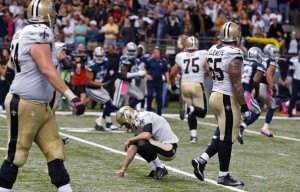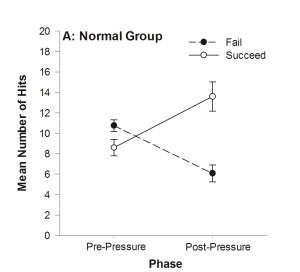Was listening to a recent episode of the “This Is You Brain on Sports” podcast co-hosted by John Wertheim from Sports Illustrated and Sam Sommers from Tufts University (Note: if you like my podcast I would recommend checking it out, that is if you are willing to tolerate lots of advertisements for sports gambling sites :))

In this episode, they were discussing the perceived kicking crisis in the NFL this year. If you have been watching this season (particularly in week 4 where over 18 kicks were missed) you might share the view of many other fans that kickers are really struggling this year. And a lot of people have identified a potential cause of this…the change in the rule for the point after touchdown (PAT) attempt. For those that don’t know, this kick has changed from being essentially a 20 yard chip shot (which kickers made roughly 99% of the time) to the equivalent of a 33 yard field goal (for which kickers have historically made 93% of the time). Some have argued that this might put kickers under extra pressure because the PAT is still thought of something that should be automatic but is now more difficult, and this in turn may lead to poorer performance on other kicks.
What do the kicking stats say? Well in the podcast they actually provide evidence from the first 6 weeks of the NFL season which shows overall there is no real crisis…the average field goals made last year (before the rule change) was 84% while this year it is 83%. But they did present one piece of data that really caught my attention. When a kicker does miss one of these new PAT’s this season, their kicking accuracy on field goals is only about 70% for the rest of the game. So while overall the new PAT rule doesn’t seem to have an effect, there is a large effect if one is missed.
Well, this is exactly what I would have predicted based on a baseball study Jon Allsop and I published in 2013. The figure below from our study shows what happens to batter performance depending on whether a batter succeeds or fails in one high pressure at bat.

Failing caused a roughly 45% reduction in batting performance for the rest of the simulated game. Based on previous research Sian Belock and I conducted, we proposed that this could be due to an attentional spillover effect. That is, the internal, self-focused attention caused by pressure (that often leads to choking) may spillover to instances of performance for an extended period after the pressure is taken away. It will be interesting to see if this PAT miss hangover effect continues for the rest of the NFL season.
Articles:
Gray, R. & Allsop, J. (2013). Interactions between performance pressure, performance streaks and attentional focus. Journal of Sport & Exercise Psychology, 35, 368-386.
Beilock, S. L., & Gray, R. (2012). From attentional control to attentional spillover: A skill-level investigation of attention, movement, and performance outcome relations. Human Movement Science, 31, 1473-1499.
